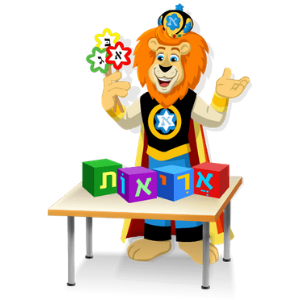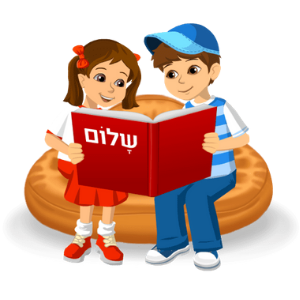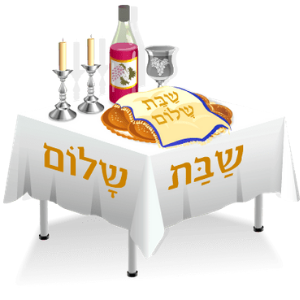
iTaLAM 1
iTaLAM 1
iTaLAM integrates digital activities, books, songs, and games using digital creative tools along with workbooks that are adapted to the digital program, library book, games, Hebrew environment (sviva Ivrit) – pictures and posters, which bring the classroom wall to life. The program fosters an exciting multidisciplinary learning experience that is based on the values of Jewish heritage and Zionism.
What will you gain through teaching Hebrew and Jewish studies with iTaLAM?
- Individual adapted instruction and learning adapted to the student’s level and individual needs.
- Accelerated learning as a result of high learning motivation and utilities for the teacher in the class.
- Personalized instruction according to the individual pace of each student.
Ariot
 The Ariot track deals with the acquisition of reading and writing skills with the help of songs, stories, comprehension activities, and games.
The Ariot track deals with the acquisition of reading and writing skills with the help of songs, stories, comprehension activities, and games.
The program includes: a digital system with an elaborate LMS, a Hebrew environment (Sviva Ivrit), workbooks, posters, flashcards, and games. The students utilize each and every communication channel:
Listening – Exposure to proper Hebrew over time
Reading – Reading according to the phonological method integrated with reading full words while emphasizing accurate and fluent reading.
Writing – Learning to write letters in both script and print, development of spelling and writing skills with the help of spelling quizzes and letter games in the system.
Speaking – Development of language skills and the development of self confidence while expressing oneself in Hebrew, listening to oneself, and furthering a sense of empowerment – I CAN!
Through the use of the computer and the pleasurable learning experience, the student’s learning is accelerated and enjoyable.
Shalom
 The unit consists of two parts: Shalom BaKita (in the classroom) and Shalom BaBayit uVaChutz (at home and outdoors). The first part focuses on the class, familiarizing the children with their fellow students, with the classroom environment and the objects it contains, with their daily routines and with the learning process. The second part deals with the objects and daily routines in the home, connecting them to the Jewish way of life, and also with the world surrounding the children and the various weather phenomena existing in nature. The learning is conducted through activities and concrete experiences facilitated through the Hebrew environment in the classroom.
The unit consists of two parts: Shalom BaKita (in the classroom) and Shalom BaBayit uVaChutz (at home and outdoors). The first part focuses on the class, familiarizing the children with their fellow students, with the classroom environment and the objects it contains, with their daily routines and with the learning process. The second part deals with the objects and daily routines in the home, connecting them to the Jewish way of life, and also with the world surrounding the children and the various weather phenomena existing in nature. The learning is conducted through activities and concrete experiences facilitated through the Hebrew environment in the classroom.
Chaggim
 The Chaggim track in iTaLAM 1 invites the students to take part in an experiential encounter with the different holidays. The students learn how to prepare for the holiday, what the holiday’s features are, and what its historical background is. They also learn about the mitzvot, the main customs and blessings (brachot), and especially learn to warmly embrace the Israeli celebrations in great depth.
The Chaggim track in iTaLAM 1 invites the students to take part in an experiential encounter with the different holidays. The students learn how to prepare for the holiday, what the holiday’s features are, and what its historical background is. They also learn about the mitzvot, the main customs and blessings (brachot), and especially learn to warmly embrace the Israeli celebrations in great depth.
The structure of the units for each holiday is similar and repeats itself making it easier for leaning and internalizing. The linguistic skills expressed in this track recur and correspond with additional content tracks.
Throughout the course of study, the students listen to Israeli songs that are connected to the holiday (for example “Shlomit Builds a Sukkah” on Sukkot, “Dreidel Spin Spin Spin” on Chanukah, etc), watch stories (for example the story of Chanukah, the Megillah story, etc) and play games in the spirit of the holiday such that the holiday is transformed into a rich and diverse celebration, where the students can actively participate.
Shabbat
 Shabbat is an integral part of Jewish heritage. Throughout the course of studying iTaLAM 1’s Shabbat track, the students will experience the anticipation of Shabbat’s entrance and will discover some of the many reasons there are to love Shabbat. The students will learn what we do on Shabbat with the help of units that are divided according to the Shabbat agenda – leading up to Shabbat (How do we prepare for Shabbat?), Shabbat eve (Shalom Aleichem, Kiddush for Shabbat eve and meal), Shabbat day (prayer at synagogue, oneg Shabbat), and Shabbat’s conclusion (Havdalah). Beyond the daily schedule, the students learn in a simple and actualized manner about the meaning of things that we do. For example, the candles that we light are for remembering and preservation and the challas recall manah.
Shabbat is an integral part of Jewish heritage. Throughout the course of studying iTaLAM 1’s Shabbat track, the students will experience the anticipation of Shabbat’s entrance and will discover some of the many reasons there are to love Shabbat. The students will learn what we do on Shabbat with the help of units that are divided according to the Shabbat agenda – leading up to Shabbat (How do we prepare for Shabbat?), Shabbat eve (Shalom Aleichem, Kiddush for Shabbat eve and meal), Shabbat day (prayer at synagogue, oneg Shabbat), and Shabbat’s conclusion (Havdalah). Beyond the daily schedule, the students learn in a simple and actualized manner about the meaning of things that we do. For example, the candles that we light are for remembering and preservation and the challas recall manah.
The Shabbat track is rich with linguistic skills such as vocabulary, sentence structure, and grammar which integrates with the other content tracks, which deepens the students’ mastery of the Hebrew language. Throughout the year, the students will experience the sacredness of Shabbat and will develop a warmth and connection to Shabbat. Stories such as “Why Do We Love Shabbat? and “Another Challah Please” in addition to Kiddush, prayer, and havdalah.





